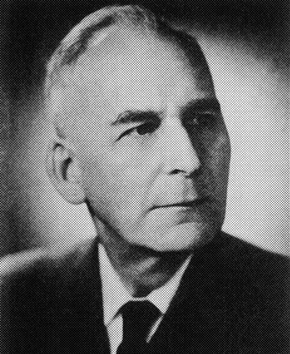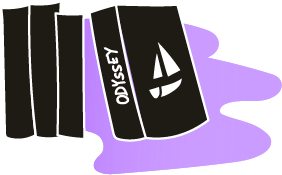Title of the resource
Title of the resource in english
Publisher
Państwowe Zakłady Wydawnictw Szkolnych;
Wydawnictwa Szkolne i Pedagogiczne
Original language
Target and Age Group
1st to 4th-grade of high school - in 1967: 15-18 years old
Author of the Entry:
Marta Pszczolińska, University of Warsaw, m.pszczolinska@al.uw.edu.pl
Peer-reviewer of the Entry:
Elżbieta Olechowska, University of Warsaw, elzbieta.olechowska@gmail.com
Second Peer-reviewer of the Entry:
Ayelet Peer, Bar- Ilan University, ayelet.peer@biu.ac.il
Wiktor Steffen
Wiktor Steffen (1903 - 1997) was a classical philologist and a Hellenist, alumnus of the University of Poznan who also studied in Berlin. He was a recognised specialist on the Ancient Greek theatre. He worked as an author of multiple critical editions, a translator, a lexicographer and an educator. He was associated with the Poznan and Wroclaw Universities but also worked at the Leipzig University.
His academic achievements include analyses of the Latin influence on Polish literature, works concerning satyr plays, Greek mime and tragedy, Greek lyric poetry, elegies and the works of Menander, Apollonius of Rhodes, Aeschylus, but also, fewer in number, publications on Roman literature and, in later life, on the history of science.
Steffen prepared critical editions of the works of Greek satire authors, Ichneutae [Trackers] of Sophocles et al. His translations include Antologia liryki aleksandryjskiej (Anthology of Alexandrine Lyrical Poetry), Works and Days by Hesiod, Antologia liryki greckiej (Anthology of Greek Lyrical Poetry), Argonautica by Apollonius of Rhodes.
He was also a recognized educator, together with J. Horowski he devised an 8-part coursebook, Vox Latina.
On behalf of the Polish Academy of Sciences, he had functional responsibility for the Greek-Polish Dictionary produced by Zofia Abramowiczówna. He himself published the Warmian Dictionary - a dictionary of the Warmian dialect/vernacular, which crowned his interests of linguistics and the Warmian region, to which he devoted about 20 scholarly papers.
source of bio: ipsb.nina.gov.pl, (accessed: August 13, 2019)

Courtesy of Muzeum Uniwersytetu Wrocławskiego
Jan Horowski
Jan Horowski (1909-1976) was a classical philologist associated with the Adam Mickiewicz University in Poznań, where he wrote/defended his doctoral thesis under the guidance of Professor Steffen. His academic achievements include monographs, scientific articles, textbooks and methodological guides for teachers. His main interests focussed on the methodology of Latin language teaching and folklore in the ancient culture, but also the folklore of Greater Poland’s villages, about which he has also written and published. His extensive experience of teaching Latin at all levels, allowed him to collaborate with Professor Steffen and devise the textbook Vox Latina and methodological guides for Latin teachers.
source of bio: I. Lewandowski, "Jan Horowski, filolog klasyczny - uczony i pedagog. Wspomnienie ucznia w czterdziestą rocznicę śmierci" w: Symbolae Philologorum Posnaniensium Graecae et Latinae XXVI/2 (2016): 167-175 In memoriam (accessed: August 13, 2019)
Contents & Purpose
The textbook was adapted to the needs of high school students and was designed to require 4 years of study. The course comprises 8 parts so that for each year of study there was a part 1 dedicated to texts and part 2 containing material for each class, exploring vocabulary and grammar and providing exercises. In addition, in the back of the textbook, there are additional grammatical tables of conjugation and declension along with commonly used phrases, maxims, a glossary and a list of proper names. Part 2 of the 4th year course does not only include grammar but also refers to ancient authors, their works and views and is additionally enriched by a bonus on the metrics as well as a musical partition for Horace’s odes Ad Maecenatem, Ad navem and Ad Postumum.
The texts for reading in the first volume of each year of study introduce the reader to the culture and history of Roman Antiquity, including the Roman beliefs and myths. Part 1 of the 1st year course provides short and easy texts, amongst which one can find paragraphs about the temple of Vesta, Neptune, Mars or the story of Leto and the Lycian Peasants. Part 1 of the 2nd year course includes a text according to Cicero about the monument of Diana from Segesta appropriated by Verres. In part 1 of the 3rd year material, the authors do not refer to mythology, but rather to the history of military science or to urbanism. In part 1 of the 4th, the final year of study, the students are to translate original ancient texts, e.g. excerpts from Ovid’s Fasti or Metamorphoses regarding the myth of Areion, Four Ages of Men, Daedalus and Icarus, Philemon and Baucis or fragments of The Aeneid by Virgil. The texts are accompanied by topical illustrations: a bas-relief of the temple of Vesta from the Uffizi Gallery, a statue of Neptune from the Lateran Museum, a statue of the Ludovisi Ares, a statue of Diana from the Vatican Museum, a Taranto coin with the eponym Taras hero riding a dolphin, Pompeian graffiti: Labyrinthus. Hic habitat Minotaurus, the Pompeian fresco of Daedalus and Icarus, a statue of Aeneas carrying Anchises.


